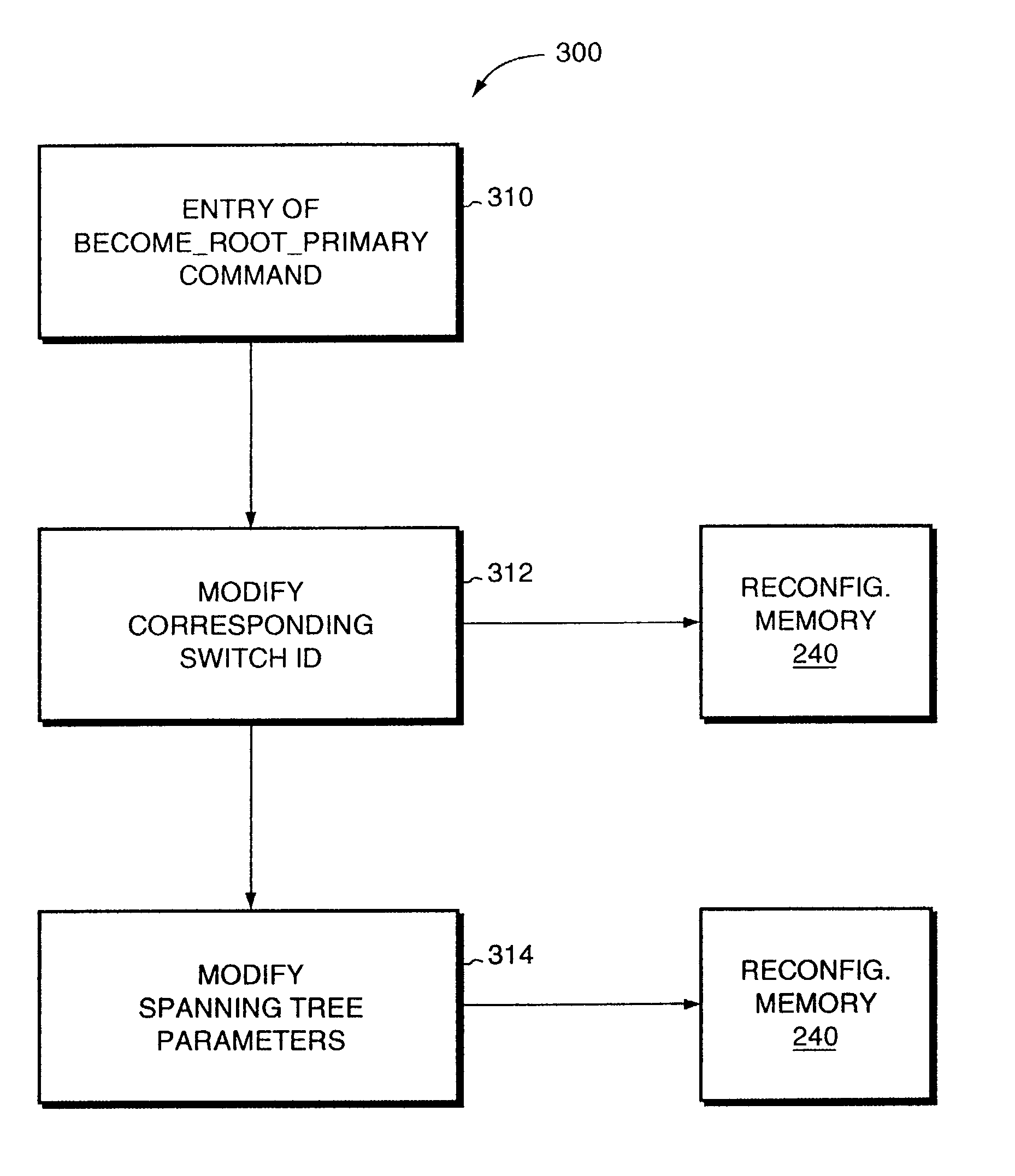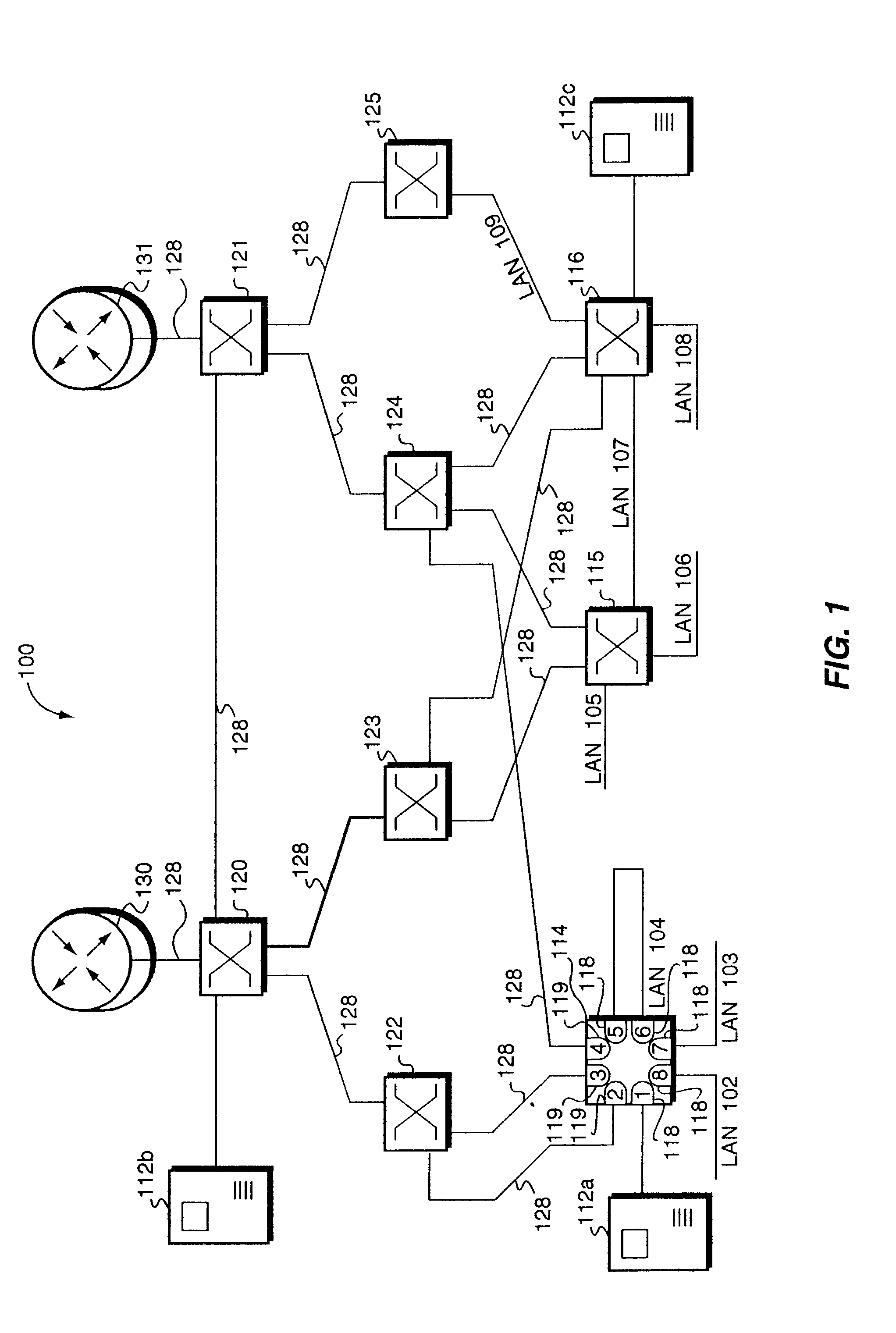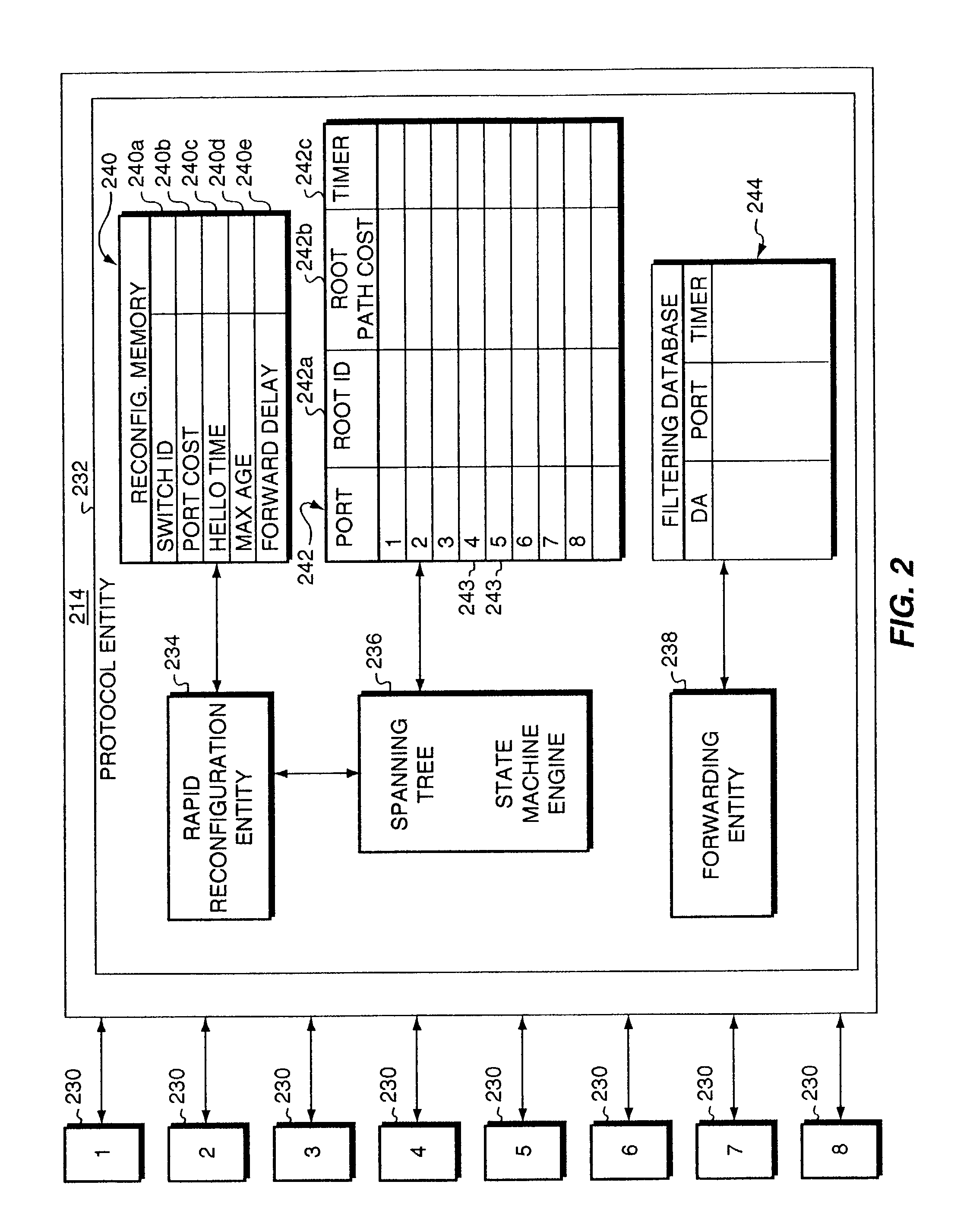Method and apparatus for rapidly reconfiguring bridged networks using a spanning tree algorithm
a bridge network and tree algorithm technology, applied in the field of computer networks, can solve the problems of high undesirable loops, circuitous paths or loops within the network, and the proliferation of data frames along loops, so as to reduce the time necessary
- Summary
- Abstract
- Description
- Claims
- Application Information
AI Technical Summary
Benefits of technology
Problems solved by technology
Method used
Image
Examples
Embodiment Construction
[0036]FIG. 1 illustrates a partially meshed computer network 100 in accordance with the present invention. The network 100 preferably comprises a plurality of local area networks (LANs) 102–109 each of which is coupled to one or more access switches 114–116. Access switches 114–116 are interconnected with each other through a plurality of backbone switches 120–125. Specifically, access switches 114–116 are generally connected to the backbone switches 120–125 through a series of links 128, such as point-to-point links, although they may be connected via a shared media (e.g., LAN 109). The backbone switches 120–125 are similarly interconnected by links 128. Each access switch 114–116 and backbone switch 120–125, moreover, includes a plurality of ports which, if coupled to a LAN 102–109, are referred to as local ports 118 and if coupled to links 128 are referred to as trunk ports 119.
[0037]Network 100 further includes a plurality of servers 112a–112c, such as file servers, print server...
PUM
 Login to View More
Login to View More Abstract
Description
Claims
Application Information
 Login to View More
Login to View More - R&D
- Intellectual Property
- Life Sciences
- Materials
- Tech Scout
- Unparalleled Data Quality
- Higher Quality Content
- 60% Fewer Hallucinations
Browse by: Latest US Patents, China's latest patents, Technical Efficacy Thesaurus, Application Domain, Technology Topic, Popular Technical Reports.
© 2025 PatSnap. All rights reserved.Legal|Privacy policy|Modern Slavery Act Transparency Statement|Sitemap|About US| Contact US: help@patsnap.com



